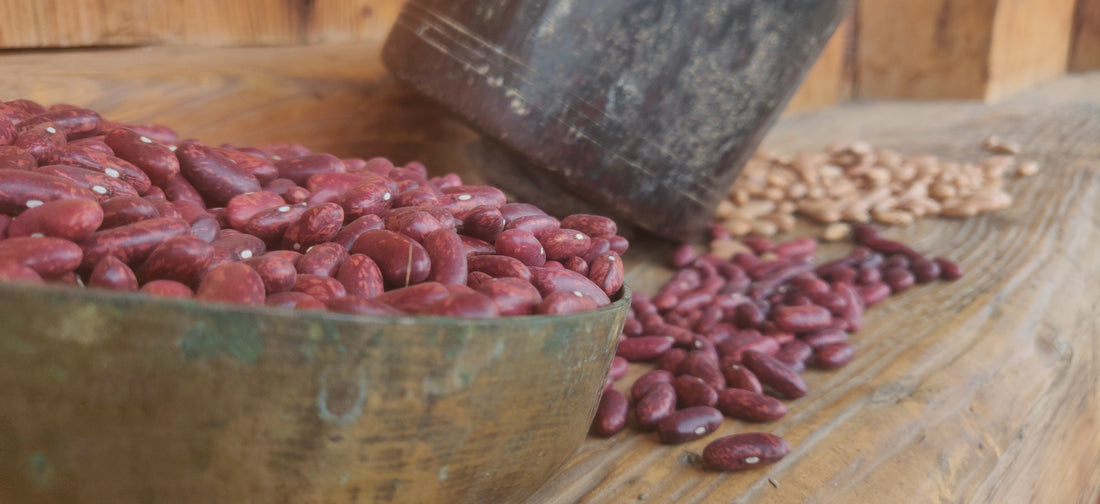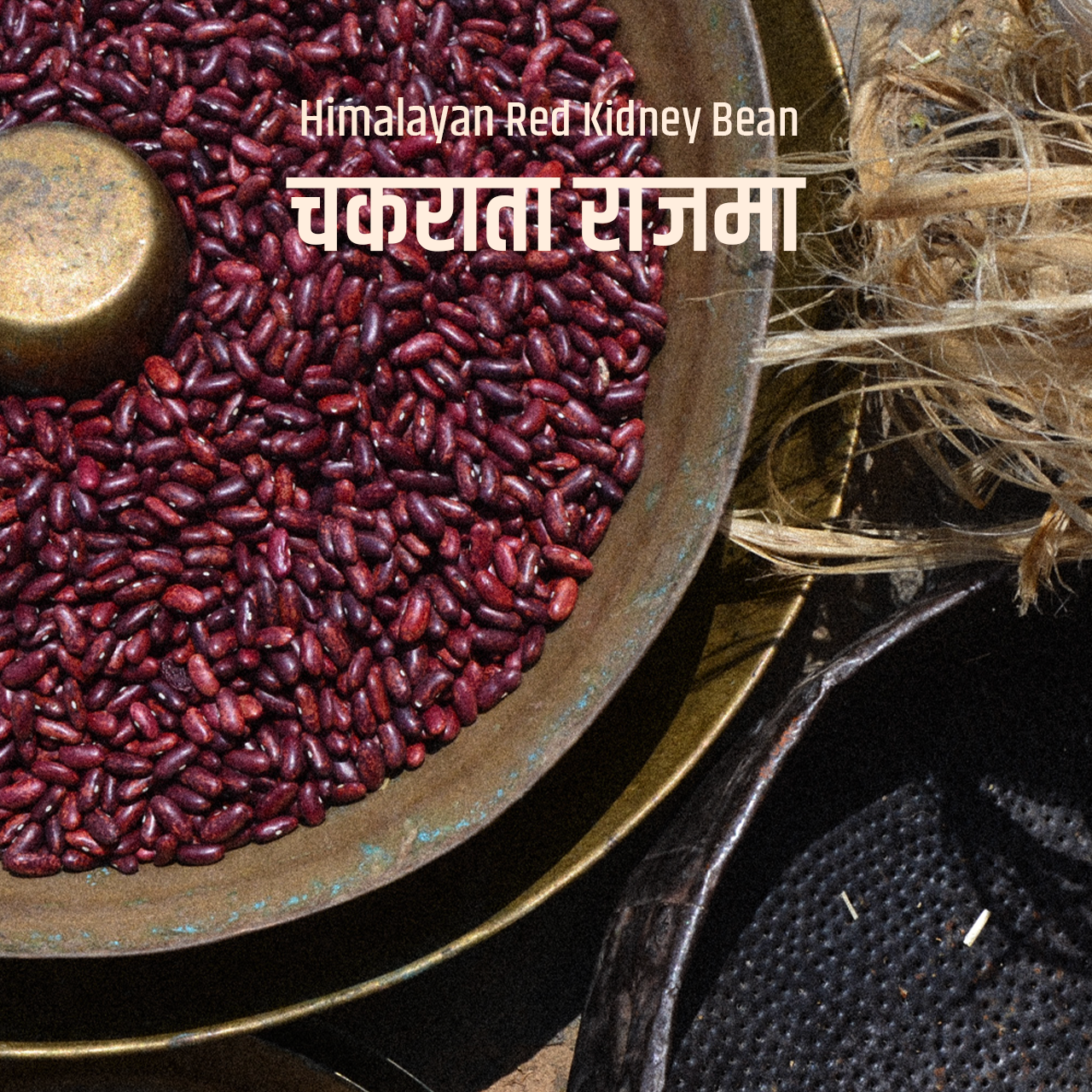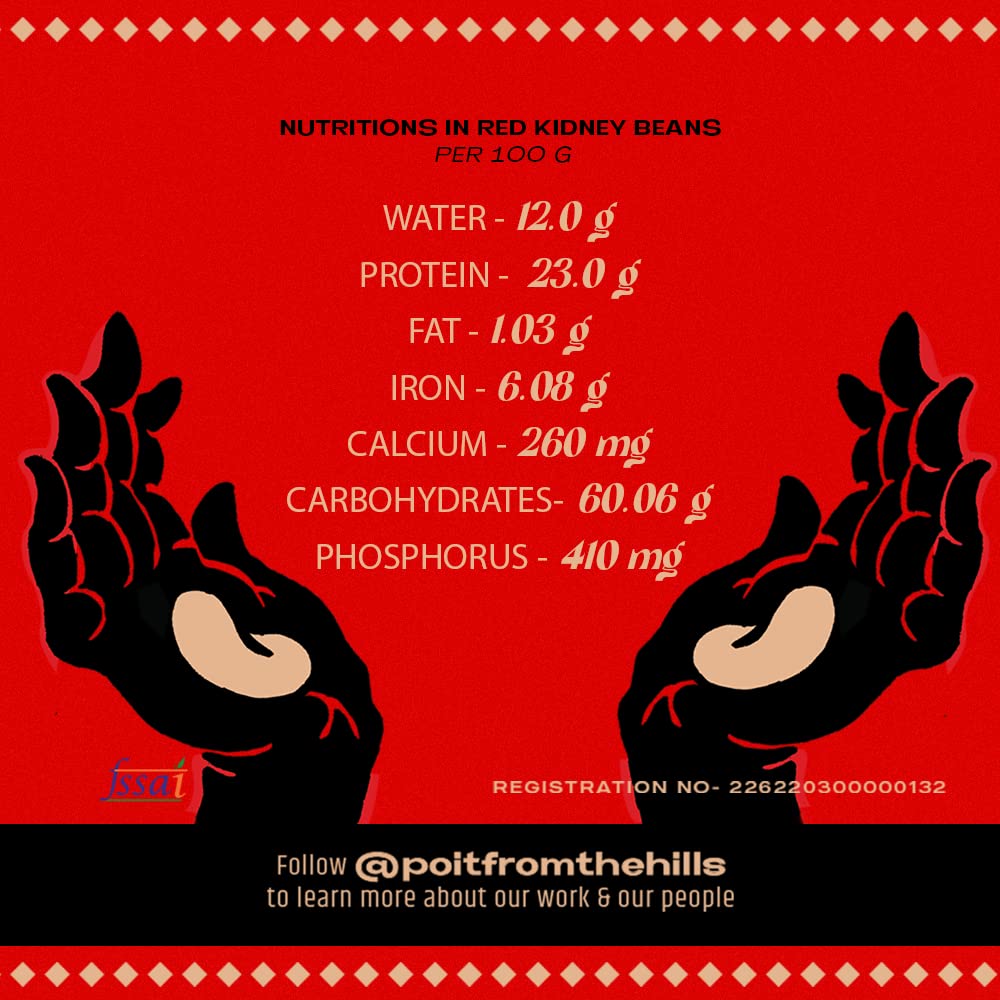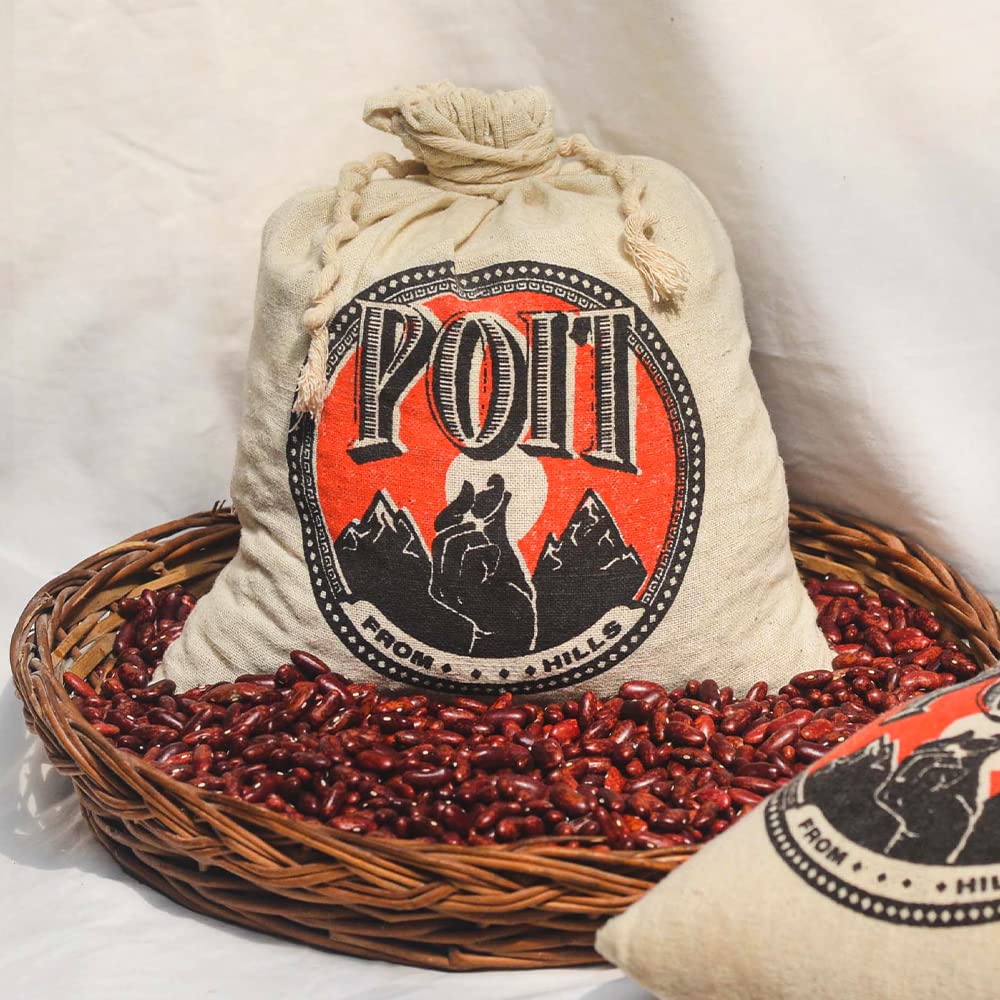
Exploring the Varieties of Rajma: From the Himalayas to Your Plate
Poit From HillsShare
Rajma, or kidney beans, are a staple across India, but not all rajma are created equal. Each variety carries its own unique flavor, texture, and regional heritage, influenced by the specific conditions in which it’s grown. At Poit from Hills, we’re proud to offer some of the finest Pahadi rajmas from the hills of Uttarakhand. By some counts, Uttarakhand is home to more than two hundred varieties of Rajma. In this blog, we’ll introduce you to the standout varieties of rajma and their distinct qualities, from flavor to nutrition.
Chakrata Rajma (Pahadi Rajma or Himalayan Kidney Beans)
Location: Grown in the Jaunsar Bawar region around Chakrata hill station, at altitudes of 5000–7000 feet.
Appearance: Dark red with some lighter hues, offering a vibrant mix of colors that reflect their natural cultivation. Their polished, shiny surface sets them apart from commercially grown kidney beans.

Taste & Texture: Known for their rich, earthy flavor, Chakrata Rajma adds depth to curries. Despite long cooking times, these beans maintain their shape while becoming tender on the inside, making them ideal for texture-driven dishes.
Best Pairing: Try Chakrata Rajma with Pahadi Red Rice for a flavorful, traditional pairing.
Harsil Rajma: The Creamiest of Them All
Location: Cultivated in the cool climates of the Harsil Valley, these beans thrive at high altitudes.
Appearance: Strikingly white at harvest, Harsil Rajma darkens over time, shifting from beige to deep brown. Their smooth, matte surface gives them an elegant look.

Taste & Texture: Harsil Rajma is creamy and rich, offering a melt-in-the-mouth experience without needing added cream. The creamy gravy it produces makes it a perfect choice for comfort food.
Best Pairing: Ideal for Galouti Rajma Kebabs or paired with white basmati rice.
Chitra Rajma: The Tastiest Variety
Location: Harvested in Chakrata, Uttarakhand.
Appearance: Two distinct varieties—one speckled with red spots, and another with a deep red color and beige hues—offer visual variety.
 Taste & Texture: With a mix of flavors that combine the best of both red and white kidney beans, Chitra Rajma is perfect for a wide range of dishes. Its creamy texture elevates curries and gravies.
Taste & Texture: With a mix of flavors that combine the best of both red and white kidney beans, Chitra Rajma is perfect for a wide range of dishes. Its creamy texture elevates curries and gravies.Best Pairing: Versatile enough for any rice pairing, especially red or white rice.
Bhaderwah Rajma: Kashmir’s Creamy Delight
Location: Bhaderwah Valley, Jammu and Kashmir.
Appearance: Deep red and glossy, these small to medium-sized beans have a smooth surface.

Taste & Texture: Known for their soft, creamy texture, Bhaderwah Rajma retains its shape while absorbing spices beautifully, making it a favorite for rajma chawal.
Popularity: Highly rated for its rich texture and quicker cooking time, it’s a popular choice in North Indian households.
Carmine Beans (Chemmi or Baaliya): Small but Mighty
Location: Sourced from Jaunsar, Uttarakhand.
Appearance: Small, red beans with a white dot, these beans are cute yet packed with nutritional benefits.

Taste & Texture: Offering a rustic, earthy flavor with a hint of buttery dal, Carmine Beans bring a unique taste to traditional dishes like Pahadi Dal Makhani.
Best Pairing: Mix with black urad dal for a creamy, unforgettable Dal Makhani.
Joshimath Red Rajma: More Than Just a Pretty Bean
Location: Joshimath, Uttarakhand.
Appearance: Vibrant red with thin skin, these large beans stand out for their subtle yet distinctive flavor.
Taste & Texture: Quick to cook and perfect for salads and soups, Joshimath Red Rajma offers a mild flavor that complements rather than overpowers dishes.
Why You’ll Love It: These beans are a testament to Uttarakhand’s rich agricultural tradition, offering health benefits along with great taste.

As we wrap up our journey through the flavorful world of rajma, we hope you’ve discovered the unique characteristics of Pahadi rajmas from the hills of Uttarakhand. At Poit from Hills, we’re committed to bringing you the finest beans, handpicked from micro-farms in the region.
So, if you’ve only ever tried store-bought rajma, take a leap and experience the rich flavors of Himalayan kidney beans. Your taste buds will thank you!
Poit From Hills Pvt Ltd: Bringing you small harvests with big flavors, straight from the heart of Uttarakhand.









